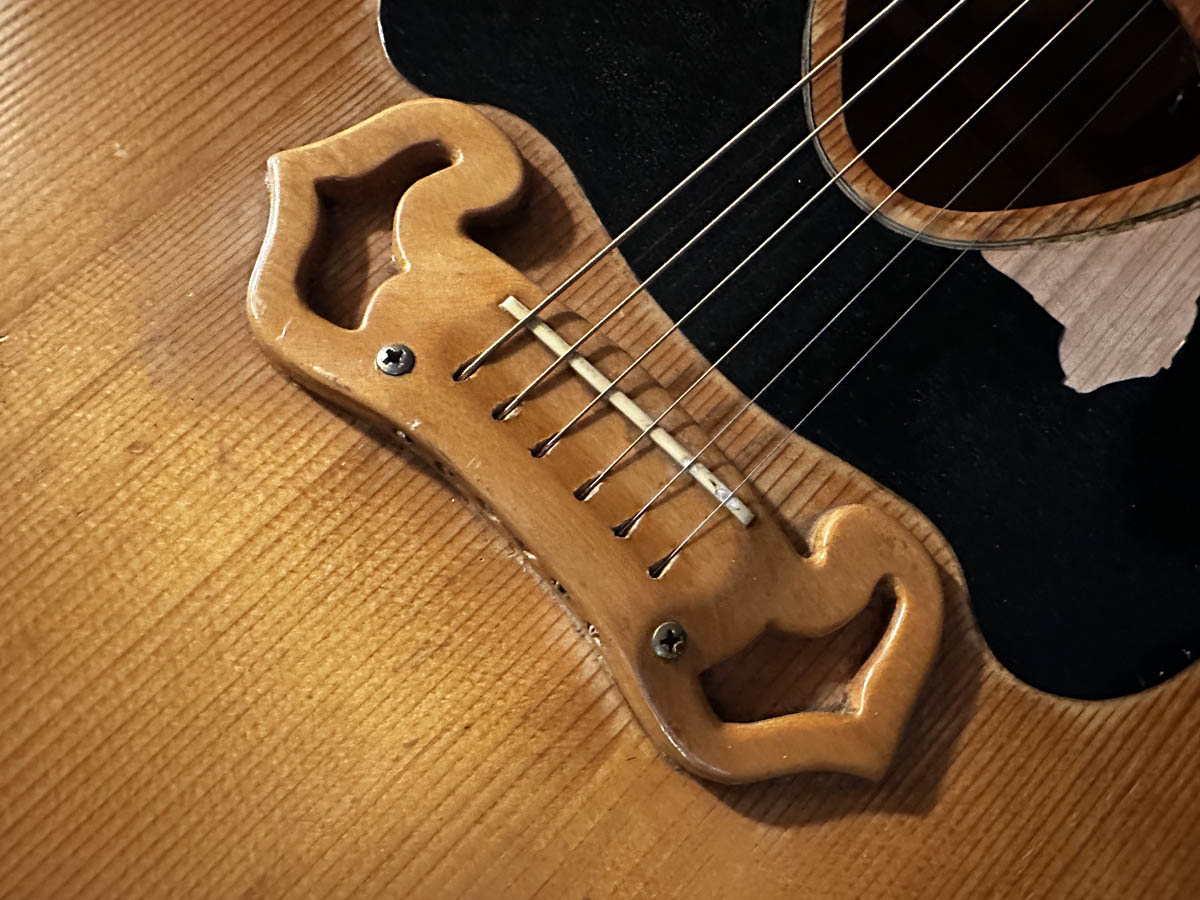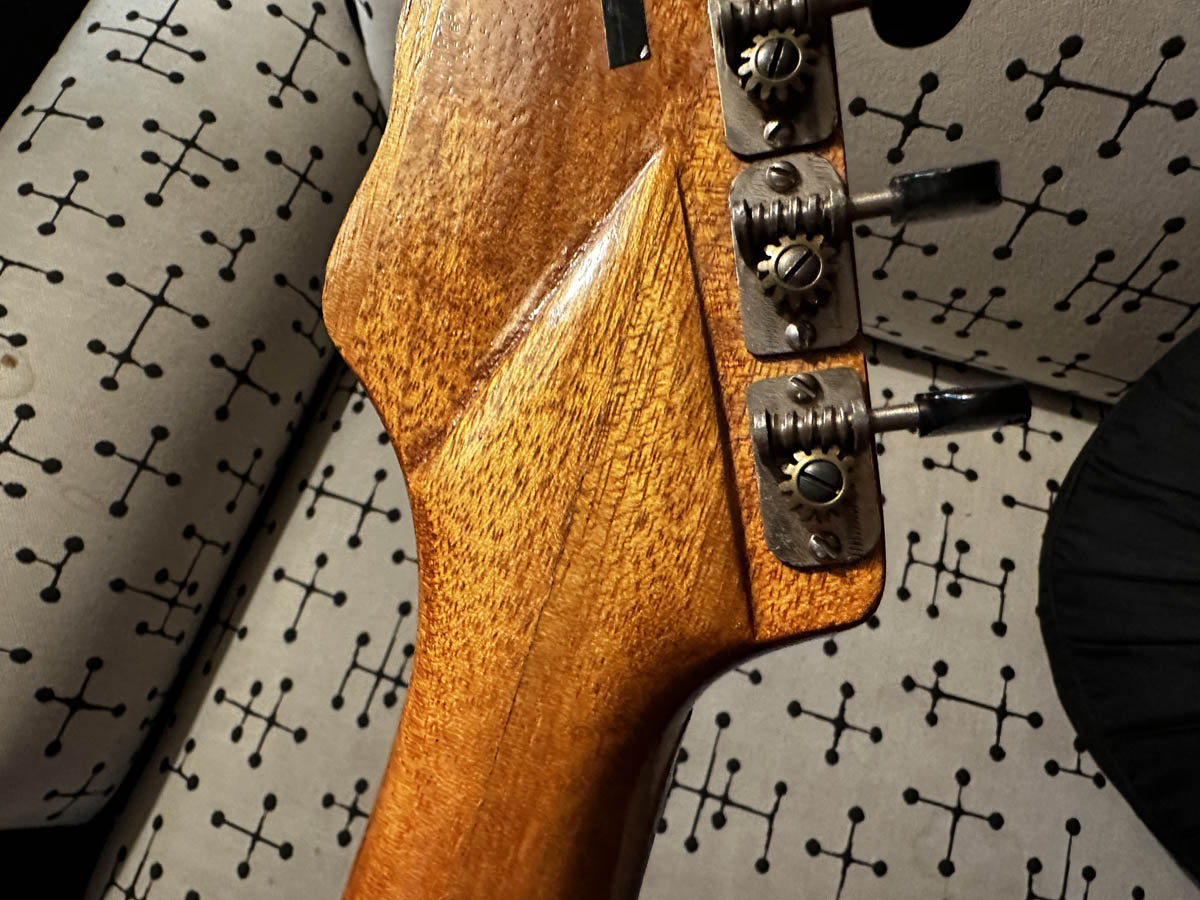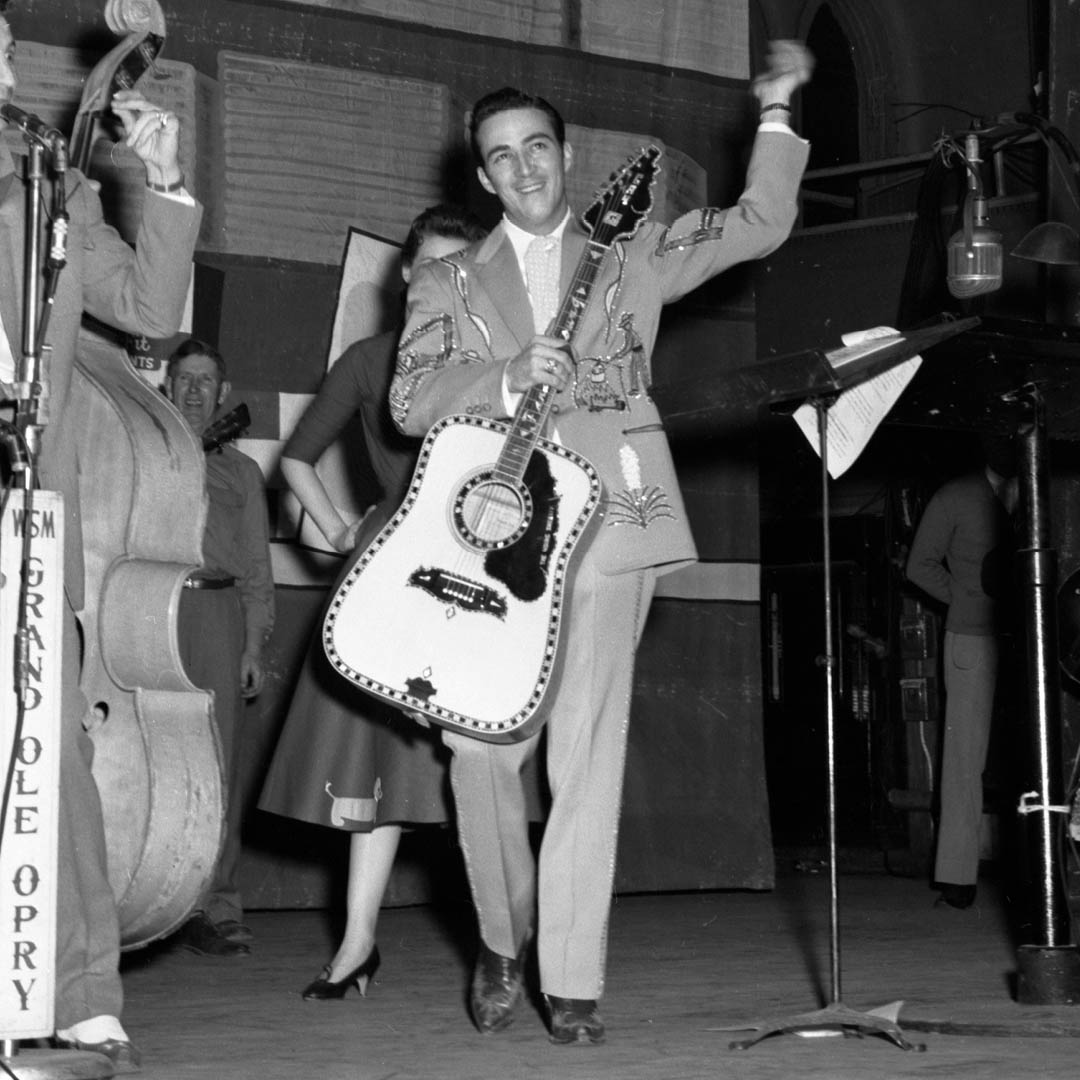Some of you guitar geeks may remember me posting some photos of a Frank Gay guitar, made in Canada, a few weeks ago, when I was going through my friend Robbie Lee’s collection in New York City. After I posted the photos of this wild, wacky and very rare Canadian instrument, my friend Paul Pigat emailed me and said, “Hey, I know where there’s a Gay guitar for sale, if you’re interested—and it’s CHEAP.” He passed along the information, and I just received the guitar yesterday.
The jury is still out whether this is an actual Frank Gay instrument or a copy of a Gay guitar (Paul seems to think it’s a real Gay, but completed during one of Frank Gay’s notorious drinking binges). It’s a much simpler and cruder instrument than many of the other Gay guitars I have seen. It retains the wild-shaped headstock of the Gay instruments that Gay made for country-western stars such as Faron Young, Carl Smith, Johnny Horton, and Webb Pierce, but it lacks the extensive abalone inlay and extreme hillbilly “flash” of the country-western guitars. This guitar I just picked up, though, is very solidly made. I would have guessed that the body was a Gibson J-45 or J-50 based on its build quality; the only giveaway that it isn’t a Gibson is the triangular sound hole. The neck is quite nice, although this instrument does need to have the neck reset, which may have accounted for the incredibly cheap price that I paid for it (it was cheaper than most Korean Epiphone acoustics you buy at Guitar Center, believe it or not).
The bridge is something I’ve never seen on another Gay instrument, but it’s also weird and wacky as all get-out, which makes me think it might be from the off-kilter mind of Frank Gay. There is no label inside the guitar, which is suspect—but again, the build quality is well above that of the typical backyard tinkerer.


Regardless of whether it’s a real Frank Gay instrument or merely a copy of a Gay, it’s a really cool and weird bit of hillbilly guitar history. And considering that it took a very small bite out of my wallet, downright affordable for a change, it’s a great wall-hanger conversation piece.

Below I’ve attached photos of just about every Gay instrument I know of—1950s through 1970s flattop acoustics and a few random multi-neck electrics. It’s really hard to tell, looking at these photos, if the guitar I just got shares any build characteristics with other Gay guitars, but then again, Gay seemed to use different build techniques on just about every guitar he made. It’s a guitar mystery, and I love me a good guitar mystery! Thanks again, Paul—it was great to pick with you last weekend at the Redwood Coast Music Festival, and I appreciate the hot tip on this git-fiddle!

